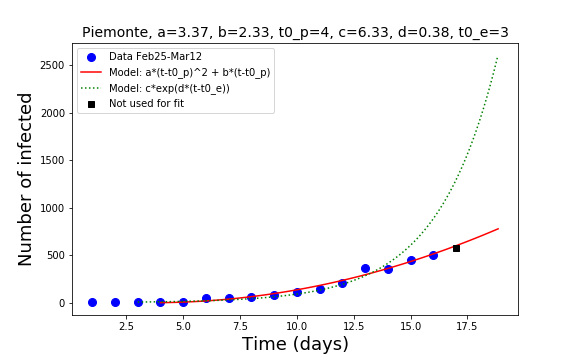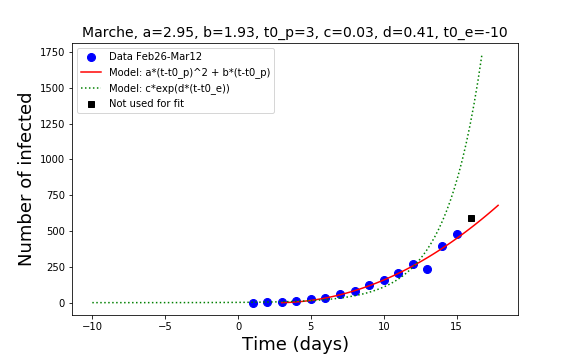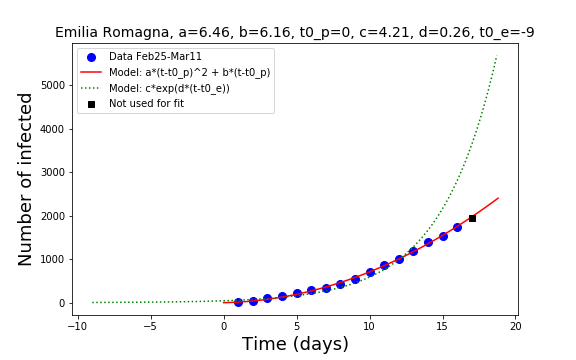Almost one week after the strong measures taken by the government, it is still too early to see their effect. Nevertheless, people who are allowed to stay home seem to cope well with the situation. However, workers in non-essential industry have to go to work as if this was not relevant for their health. Protests and requests of workers strike are mounting. The government should take a firm stand and close all non essential factories.

Lombardia and Veneto
In Lombardia the situation is still very critical, with an exponential growth of the number of infections driven by the provinces of Bergamo, Brescia, Cremona and Milano (see here for more graphics).
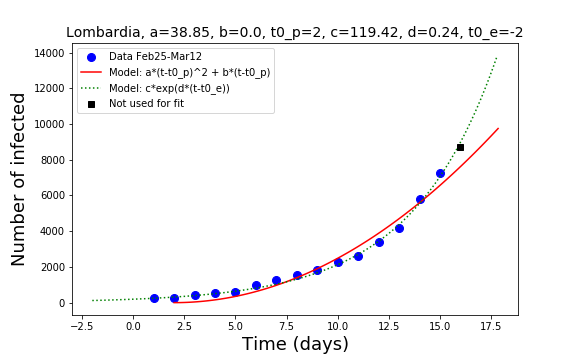
At this rate, the number of infected people in Lombardia duplicates every three days, meaning that by the end of the week there will be a bit less than 50000 cases in the region. Nobody can foresee what this may mean, taking into account the recommendations of the Siaarti to overcome the extreme shortage of beds in the intensive care units.
The region Veneto, which seemed to have achieved a full control of the situation at the time of my last post, has instead shown that optimisms must be kept for better times.
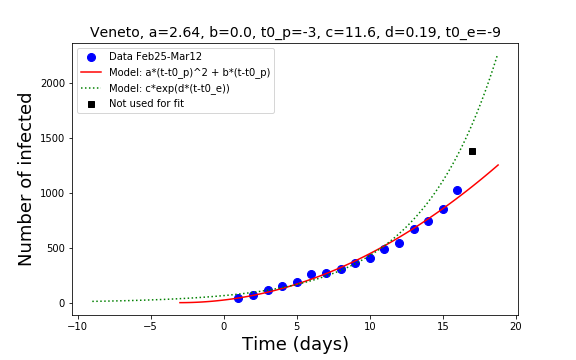
With a number of infections regaining rapid momentum, it seems that the policy of testing as many people as possible has been relaxed to early. It is nevertheless also possible that the region suffers from importing cases from the neighboring Lombardia.
Piemonte, Marche, and Emilia Romagna
These regions have a less dramatic situation compared to Lombardia and their growth is less compromised as the one seen for Veneto.
While both in Piemonte and in Emilia Romagna the number of new infections seems to be growing constantly but linearly with time, the situation in the region Marche is slightly worsening. If things do not change, Piemonte and Emilia Romagna will soon get a relief and may be ready to help Lombardia overcome the very bad time there.
Suggestions for the next future
The measures taken by the Italian government will work at some point. Nevertheless, the Italian authorities should try to learn more from the Chinese and South Korean authorities in order to take secure control.
There is however an uncertainty that concerns the workers in non-essential branches of the industry. Many of them have to work without any protection and there is no real need for them to go to work except for protecting the interests of the big industry. In the sake of helping the country to go out of the infection, every worker in non-essential branches should also stay home with full payment.
It’s also time to critically reconsider the restructuring actions in the medical system taken by the Italian governments over the past 20 years, that have led to such a shortage of personnel and beds.
